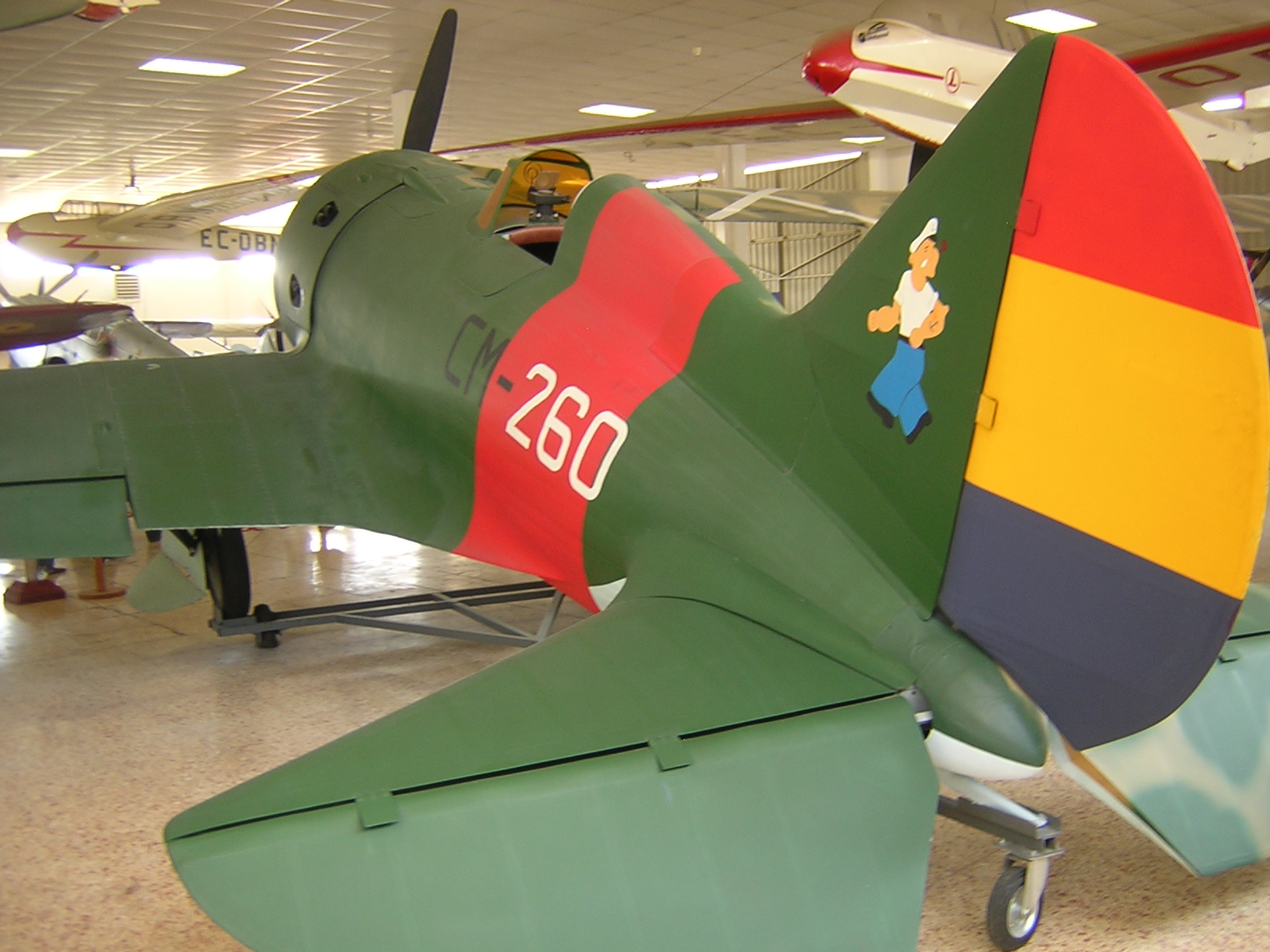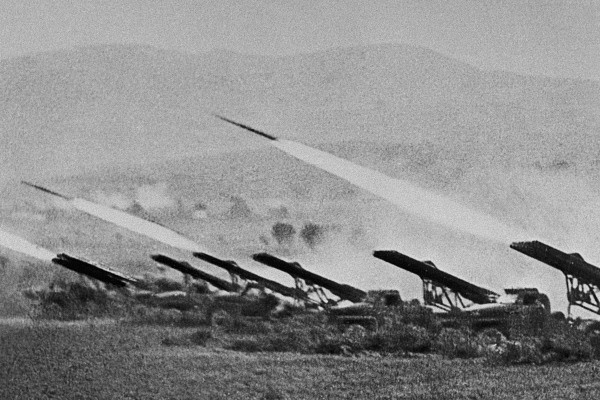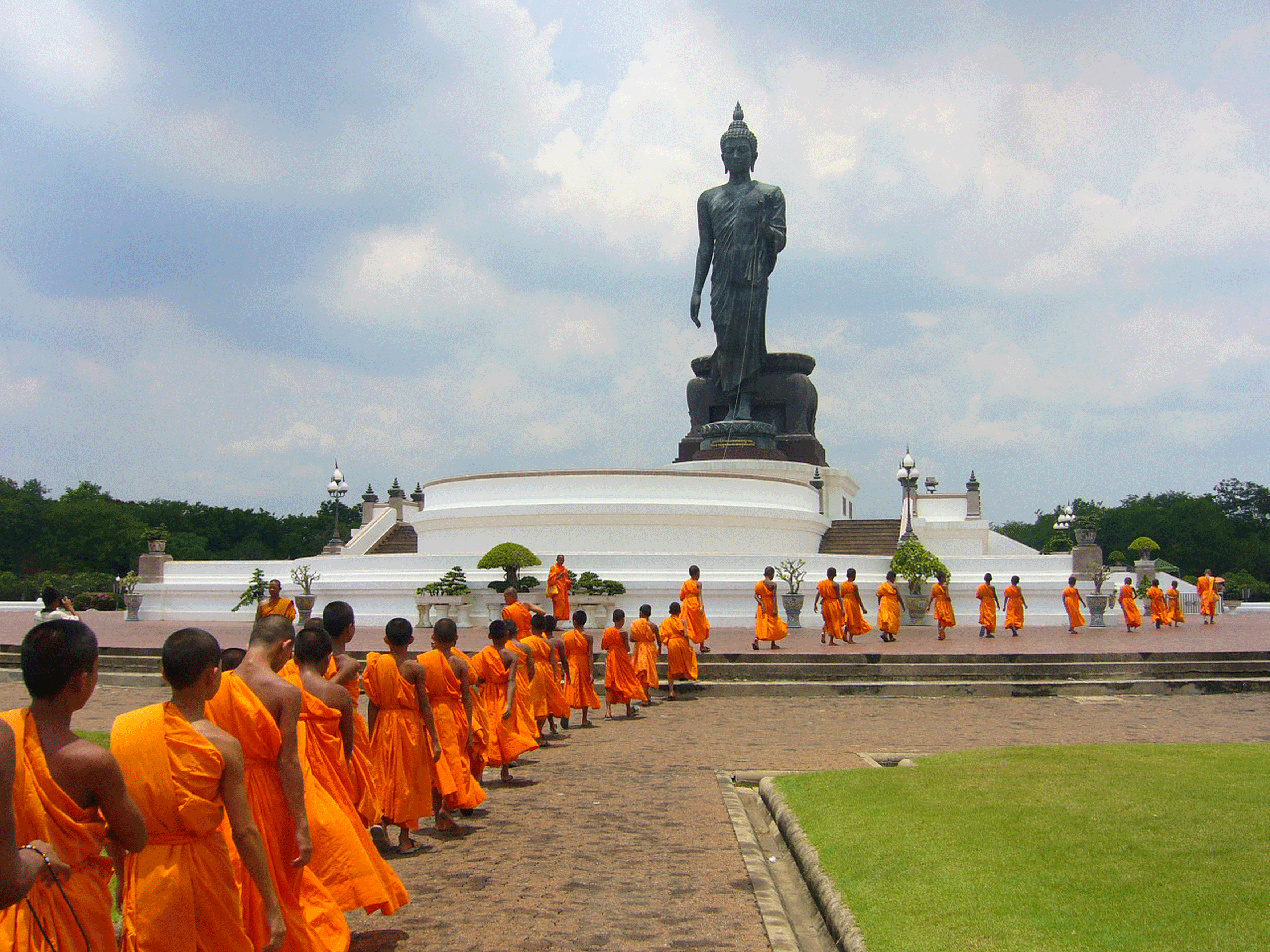|
RS-82
RS-82 and RS-132 (Russian: Реактивный Снаряд, ''Reaktivny Snaryad''; rocket-powered projectile) were unguided rockets used by Soviet military during World War II. Development Design work on RS-82 and RS-132 rockets began in the late 1920s, by the Gas Dynamics Laboratory (GDL) led by Georgy Langemak, and including Nikolai Tikhomirov, Vladimir Artemiev, Boris Petropavlovsky, Yuriy Pobedonostsev, and others. The 82 mm (3.2 in) and 132 mm (5.2 in) diameters were chosen because the standard smokeless gunpowder charge used at the time was 24 mm (0.94 in) in diameter and seven of these charges fitted into an 82 mm cylinder. The first test-firing of a solid fuel rocket was carried out in March 1928, which flew for about 1,300 meters and in 1932 in-air test firings of RS-82 missiles from an Tupolev I-4 aircraft armed with six launchers successfully took place. In 1933 GDL became part of the Reactive Scientific Research Institute, where dev ... [...More Info...] [...Related Items...] OR: [Wikipedia] [Google] [Baidu] |
Reactive Scientific Research Institute
Reactive Scientific Research Institute (commonly known by the joint initialism RNII; ) was one of the first Soviet research and development institutions to focus on rocket technology. RNII developed the Katyusha rocket launcher and its research and development were very important for later achievements of the Soviet rocket and space programs. History The 'Reactive Scientific Research Institute' (RNII) was officially established on 21 September 1933 by combining the Group for the Study of Reactive Motion (GIRD) with the Gas Dynamics Laboratory (GDL). Personnel based in Leningrad were relocated to Moscow. Background Before 1931 there were two Soviet organizations devoted to researching rocket technology, the Leningrad-based GDL, and the mainly Moscow-based GIRD. The benefits of combining the two groups were recognized, particularly by Marshal Mikhail Tukhachevsky, the deputy People’s Commissar of Military and Naval Affairs (Narkomvoyenmor) and Deputy Chairman of the Revolut ... [...More Info...] [...Related Items...] OR: [Wikipedia] [Google] [Baidu] |
Polikarpov I-16
The Polikarpov I-16 () is a Soviet single-engine single-seat fighter aircraft of revolutionary design; it is a low-wing cantilever monoplane fighter with retractable landing gear, and the first such aircraft to attain operational status. It "introduced a new vogue in fighter design".Green, William. "Polikarpov's Little Hawk". ''Flying Review'', November 1969. The I-16 was introduced in the mid-1930s and formed the backbone of the Soviet Air Force at the beginning of World War II. The diminutive fighter, nicknamed "''Ishak''" or "''Ishachok''" ("donkey" or "burro") by Soviet pilots, figured prominently in the Second Sino-Japanese War,Liss 1966, p. 10. the Battle of Khalkhin Gol, Winter War and the Spanish Civil War – where it was called the ("rat") by the Nationalists or (" fly") by the Republicans. The Finns called the aircraft "(flying squirrel)". Design and development While working on the Polikarpov I-15 biplane, Nikolai Nikolaevich Polikarpov began desig ... [...More Info...] [...Related Items...] OR: [Wikipedia] [Google] [Baidu] |
Air-to-air Rocket
An air-to-air rocket or air interception rocket is an unguided projectile fired from aircraft to engage other flying targets. They were used briefly in World War I to engage enemy observation balloons and in and after World War II to engage enemy bombers. Fighters were too maneuverable to be effectively engaged with rockets. History World War I Rocket (weapon), Rockets were used in World War I to engage observation balloons and airships. Success rates were low and the rockets were dangerous to handle in the early fighters built from highly flammable materials. By the end of the war they were replaced by the incendiary Pomeroy bullets. The Pomeroy bullet was developed to strike German Zeppelin airships, by igniting the hydrogen in the balloon. They did not always work. One of the notable rockets from World War I was the Le Prieur rocket which had a range of about , limited by inaccuracy. It was first used in the Battle of Verdun. Interwar period The first known example of a succ ... [...More Info...] [...Related Items...] OR: [Wikipedia] [Google] [Baidu] |
Ilyushin Il-2
The Ilyushin Il-2 ( Russian: Илью́шин Ил-2) is a ground-attack plane that was produced by the Soviet Union in large numbers during the Second World War. The word ''shturmovík'' (Cyrillic: штурмовик), the generic Russian term for a ground-attack aircraft, became a synecdoche for the Il-2 in English sources, where it is commonly rendered Shturmovik, StormovikStapfer, 1995 and Sturmovik.Rastrenin, 2008 To Il-2 pilots, the aircraft was known by the diminutive "Ilyusha". To the soldiers on the ground, it was called the "Hunchback", the "Flying Tank" or the "Flying Infantryman". Its postwar NATO reporting name was Bark.Gunston 1995, p. 106. During the war, 36,183 units of the Il-2 were produced, and in combination with its successor, the Ilyushin Il-10, a total of 42,330Jane's 1989, p. 529. were built, making it the single most produced military aircraft design in aviation history, as well as one of the most produced piloted aircraft in history along with the ... [...More Info...] [...Related Items...] OR: [Wikipedia] [Google] [Baidu] |
Katyusha Rocket Launcher
The Katyusha ( rus, Катю́ша, p=kɐˈtʲuʂə, a=Ru-Катюша.ogg) is a type of rocket artillery first built and fielded by the Soviet Union in World War II. Multiple rocket launchers such as these deliver explosives to a target area more intensively than conventional artillery, but with lower accuracy and requiring a longer time to reload. They are fragile compared to artillery guns, but are cheap, easy to produce, and usable on almost any chassis. The Katyushas of World War II, the first self-propelled artillery mass-produced by the Soviet Union,Zaloga, p. 150. were usually mounted on ordinary trucks. This mobility gave the Katyusha, and other self-propelled artillery, another advantage: being able to deliver a large blow all at once, and then move before being located and attacked with counter-battery fire. Katyusha weapons of World War II included the BM-13 launcher, light BM-8, and heavy BM-31. Today, the nickname ''Katyusha'' is also applied to newer truck-mount ... [...More Info...] [...Related Items...] OR: [Wikipedia] [Google] [Baidu] |
Gas Dynamics Laboratory
Gas Dynamics Laboratory (GDL) () was the first Soviet research and development laboratory to focus on rocket technology. Its activities were initially devoted to the development of Solid-propellant rocket, solid propellant rockets, which became the prototypes of missiles in the Katyusha rocket launcher, as well as Liquid-propellant rocket, liquid propellant rockets, which became the prototypes of Soviet rocketry, Soviet rockets and Soviet space program, spacecraft. At the end of 1933 it became part of the Reactive Scientific Research Institute (RNII). A number of craters on the far side of the Moon are named after GDL employees. History of the organization * First rocket research and development organization in the USSR.Gas-Dynamic Laboratory, * Created on 1 March 1921 in science, 1921 in Moscow as the "Laboratory for the development of inventions by Nikolai Tikhomirov (chemical engineer), N. I. Tikhomirov" as part of the Main Artillery Directorate of the Workers' and Peasa ... [...More Info...] [...Related Items...] OR: [Wikipedia] [Google] [Baidu] |
Georgy Langemak
Georgy Erikhovich Langemak (; – 11 January 1938) was a Soviet engineer, working on rocket design applications. He is chiefly remembered for being the co-designer and directing the development of the aircraft unguided rockets, such as the RS-82 (rocket family), RS-82 and RS-132, which were modified to be used with such success in the Katyusha rocket launchers of World War II. The crater Langemak (crater), Langemak on the Moon is named in his honor. Life Beginning in 1928, he worked at the Soviet Gas Dynamics Laboratory along with several other notable Soviet rocket scientists, and they developed rocket projectiles that used smokeless powder. This group was later merged with another rocketry organization to become the Reactive Scientific Research Institute (RNII). Langemak became the deputy director of the RNII. In 1936 this group completed the technical specifications for a rocket-glider. In 1937 during the Great Purge, he was fired and subsequently arrested by NKVD, along ... [...More Info...] [...Related Items...] OR: [Wikipedia] [Google] [Baidu] |
Polikarpov I-153
The Polikarpov I-153 ''Chaika'' () is a late 1930s Soviet sesquiplane fighter. Developed from the I-15 with a retractable undercarriage, the I-153 fought in the Soviet-Japanese combats in Mongolia and was one of the major Soviet fighter types in the early years of the Second World War. Three I-153s are still in flying condition. The I-153 is powered by the Shvetsov M-62 radial engine. Design and development In 1937, the Polikarpov design bureau carried out studies to improve on the performance of its I-15 and I-15bis biplane fighters without sacrificing manoeuvrability, as Soviet tactical doctrine was based on a mix of high performance monoplane fighters (met by the Polikarpov I-16) and agile biplanes.Gordon and Dexter 1999, p. 124. Early combat experience from the Spanish Civil War had shown that the I-16 had problems dealing with the Fiat CR.32 biplanes used by the Italian forces supporting the Nationalists, which suggested a need to continue the use of biplane fighters, ... [...More Info...] [...Related Items...] OR: [Wikipedia] [Google] [Baidu] |
Tupolev SB
The Tupolev ANT-40, also known by its service name Tupolev SB ( – ''Skorostnoi Bombardirovschik'' – high speed bomber) and development co-name TsAGI-40, was a high speed twin-engined three-seat monoplane bomber, first flown in 1934. The Tupolev design was advanced but lacked refinement, much to the dismay of crews, maintenance personnel, and Stalin, who pointed out that "there are no trivialities in aviation". Numerically the most important bomber in the world in the late 1930s, the SB was the first modern stressed skin aircraft produced in quantity in the Soviet Union and probably the most formidable bomber of the mid-1930s. It was produced in the Soviet Union and was also built under license in Czechoslovakia. Many versions saw extensive action in Spain, the Republic of China, Mongolia, Finland and at the beginning of World War II against Germany in 1941. It was also used in various duties in civil variants, as trainers and in many secondary roles. Successful in the Spanis ... [...More Info...] [...Related Items...] OR: [Wikipedia] [Google] [Baidu] |
Winter War
The Winter War was a war between the Soviet Union and Finland. It began with a Soviet invasion of Finland on 30 November 1939, three months after the outbreak of World War II, and ended three and a half months later with the Moscow Peace Treaty on 13 March 1940. Despite superior military strength, especially in tanks and aircraft, the Soviet Union suffered severe losses and initially made little headway. The League of Nations deemed the attack illegal and expelled the Soviet Union from its organization. The Soviets made several demands, including that Finland cede substantial border territories in exchange for land elsewhere, claiming security reasonsprimarily the protection of Leningrad, from the Finnish border. When Finland refused, the Soviets invaded. Most sources conclude that the Soviet Union had intended to conquer all of Finland, and cite the establishment of the Finnish Democratic Republic, puppet Finnish Communist government and the Molotov–Ribbentrop Pact' ... [...More Info...] [...Related Items...] OR: [Wikipedia] [Google] [Baidu] |
Battle Of Khalkhin Gol
The Battles of Khalkhin Gol (; ) were the decisive engagements of the undeclared Soviet–Japanese border conflicts involving the Soviet Union, Mongolia, Japan and Manchukuo in 1939. The conflict was named after the river Khalkhin Gol, which passes through the battlefield. In Japan, the decisive battle of the conflict is known as the after Nomonhan Burd Obo, an ''obo'', a cairn set as a border marker in the Yongzheng period of the Qing dynasty. The battles resulted in the defeat of the Japanese Sixth Army. Background After the Japanese occupation of Manchuria in 1931, Japan turned its military interests to Soviet territories that bordered those areas. Meanwhile, the Soviet Union and the People's Republic of Mongolia signed an Mutual Assistance Pact in March 1936, allowing the former to send troops to Mongolia. In the same year, Japan signed the Anti-Comintern Pact in response. Following Japan's full invasion of China in July 1937, the Soviet Union sent the 57th Special ... [...More Info...] [...Related Items...] OR: [Wikipedia] [Google] [Baidu] |
1939 In Aviation
This year also marks the start of the Second World War, the largest and deadliest conflict in human history. Events Events related to World War II have a "WWII" prefix. January * January 1 ** Coming into effect in Nazi Germany of: *** The Protection of Young Persons Act, passed on April 30, 1938, the Working Hours Regulations. *** The small businesses obligation to maintain adequate accounting. *** The Jews name change decree. ** With his traditional call to the New Year in Nazi Germany, Führer and Reich Chancellor Adolf Hitler addresses the members of the National Socialist German Workers' Party (NSDAP). ** The Hewlett-Packard technology and scientific instruments manufacturing company is founded by Bill Hewlett and David Packard, in a garage in Palo Alto, California, considered the birthplace of Silicon Valley. ** Philipp Etter takes over as President of the Swiss Confederation. ** The Third Soviet Five Year Plan is launched. * January 5 – Pioneering U.S. a ... [...More Info...] [...Related Items...] OR: [Wikipedia] [Google] [Baidu] |








